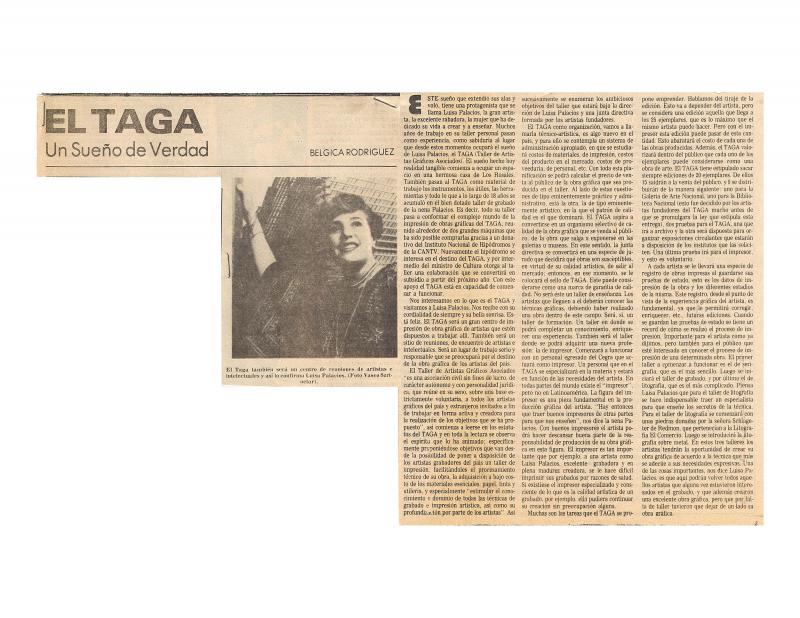The text presents the 1982 exhibition of CEGRA (Centro de Enseñanza Gráfica, Caracas) at the CANTV (Compañía Anónima Nacional de Teléfonos de Venezuela, Caracas). The Venezuelan critic Roberto Guevarra (1932–98) explains the trajectory and work of this institute five years after its founding, emphasizing the essentials: that before CEGRA was a school, it was a workshop where the professors taught through dialogue instead of offering academic classes. The primary takeaway from the text is the spirit of this unique experiment in graphic education. Guevara stresses that along with the rigorous methodology required for a profession in graphics, the work of the students was characterized by freedom, enthusiasm, and audacity. The text offers the possibility of adding one more chapter to the history of graphic education in Venezuela, as it proves that CEGRA, along with systematizing knowledge that until that moment had been imparted in an informal manner at the workshop of the Venezuelan artist Luisa Palacios (1923–90)—or also by artists who had consolidated their efforts as with TAGA (Taller de Artistas Gráficos Asociados, Caracas; founded in 1976 and in continual existence since 1980 to today)—CEGRA also enriched the formal work with the creative spirit in order to produce a holistic graphic artist. (With regard to TAGA, see the article by critic Bélgica Rodríguez (b. 1941), “TAGA: un sueño de verdad” [doc. no. 1068980].)
CEGRA was closed in 1990 in order to be incorporated into a project of the Instituto Superior de Arte, IUESAPAR (Instituto de Estudios Superiores de Artes Plásticas Armando Reverón, Caracas, created in 1991), which itself was later absorbed into the Universidad Nacional Experimental de las Artes (UNEARTE, Caracas, established in 2008).

